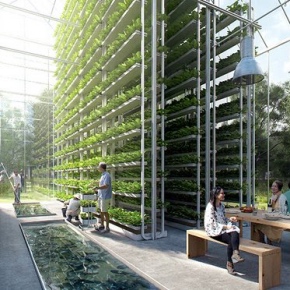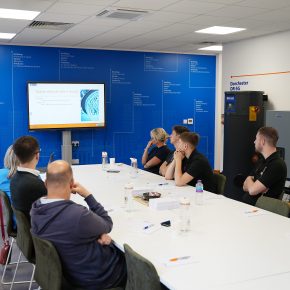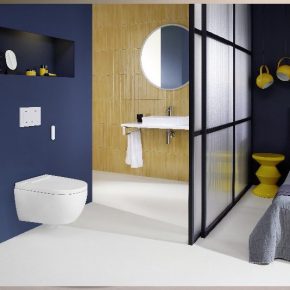
How the building industry is helping to reduce its environmental impact
Over the past few years, there’s been many changes and restrictions placed upon UK businesses to lower their environmental impact. As global warming becomes a major threat, it’s become more important than ever before to reduce our carbon footprint.
Even the building industry has started to implement changes to ensure new houses and buildings are constructed in an environmentally friendly way. So, will we start to see even more eco-friendly buildings constructed in the not too distant future?
Could the UK follow the USA’s lead?
Just last year, the Guardian published an interesting article on the eco-friendly communes growing in popularity in the US; questioning whether these communes could change the future of housing across the world.
The idea behind the communes was to reduce ecological impact, encouraging self-sufficiency and preparing people for possible future disasters. Everything about their design has been done in an eco-friendly manner, and other countries have already adopted the same idea such as Amsterdam. So, will the UK follow suit? It will certainly be interesting to find out!
What is being done right now?
The eco-friendly communes being constructed around the globe are exciting, but we’ll likely have to wait a while for the UK to follow suit. So, what environmentally friendly changes have been implemented in the UK buildings industry right now?
Well, take the housing market for example. Not only has there been a rise in the number of eco-friendly construction companies available, but there’s also been a focus on using environmentally friendly materials.
Homes and buildings are being constructed with better insulation. Take the Thermafleece insulation from Burton Roofing for example. Made from completely recycled materials, they have been constructed using fifteen years’ worth of research and development. They offer fantastic insulation to reduce energy waste and even during their construction they’ve had a low environmental impact.
In 2006, the government made revisions to the Building Regulations 2000, to improve energy efficiency. The measures it introduced were estimated to save around 1 million tonnes of carbon each year by 2010.
Buildings constructed these days need to ensure the heating, lighting, hot water and cooling systems all meet energy efficiency measures. Windows, vents, doors and roof light fittings also need to be draught proof, while the actual materials for construction will need to be locally sourced and even reclaimed where possible.
Passive houses could be the future
Along with eco-friendly communes, passive houses could be the design of the future. There’s already 30,000 of them situated around the globe, including some in the UK. They run on very little energy and the very first one to be built in the UK was designed by architect Justin Bere. He designed the very first certified passive house in Camden, England.
Overall, the buildings industry has changed dramatically in recent years, with eco-friendly designs becoming extremely important. It’s likely we’ll start to see many more eco-friendly buildings being introduced into the UK in the not too distant future as the battle to fight global warming continues.
Latest news

24th April 2024
Mitsubishi Electric welcomes new code of conduct for smart appliances
Mitsubishi Electric welcomes a new code of conduct on energy smart appliances which the European Union (EU) announced yesterday at the Hannover Fair in Germany.
Posted in Air Conditioning, Articles, Building Industry Events, Building Industry News, Building Products & Structures, Building Regulations & Accreditations, Building Services, Exhibitions and Conferences, Facility Management & Building Services, Heating Systems, Controls and Management, Heating, Ventilation and Air Conditioning - HVAC, Plumbing, Retrofit & Renovation, Seminars, Sustainability & Energy Efficiency
24th April 2024
Hamworthy Heating expands CIBSE approved CPD modules with new hot water series
Hamworthy Heating, technical experts in commercial heating and hot water products, announce the expansion of its market leading CIBSE approved Continuing Professional Development (CPD) portfolio with the launch of three new learning modules.
Posted in Articles, Building Industry Events, Building Industry News, Building Products & Structures, Building Services, Continuing Professional Development (CPD's), Facility Management & Building Services, Heating Systems, Controls and Management, Heating, Ventilation and Air Conditioning - HVAC, Plumbing, Retrofit & Renovation, Seminars, Training
24th April 2024
New technology partnership brings Passivent ventilation products to IESVE
Passivent has partnered with Integrated Environmental Solutions (IES) to make a number of its products available to model within the Virtual Environment (VE) platform IESVE.
Posted in Air Conditioning, Articles, Building Industry News, Building Products & Structures, Building Services, Facility Management & Building Services, Heating, Ventilation and Air Conditioning - HVAC, Information Technology, Innovations & New Products, Posts, Retrofit & Renovation, Roofs, Ventilation
23rd April 2024
Geberit brings Parallel World to Clerkenwell Design Week
Visitors to this year’s Clerkenwell Design Week (21 – 23 May) can step into a parallel world and discover the benefits of cleaning with water, thanks to Geberit.
Posted in Articles, Bathrooms & Toilets, Bathrooms, Bedrooms & Washrooms, Building Industry Events, Building Industry News, Building Products & Structures, Building Services, Exhibitions and Conferences, Innovations & New Products, Interior Design & Construction, Interiors, Plumbing, Restoration & Refurbishment, Retrofit & Renovation
 Sign up:
Sign up: